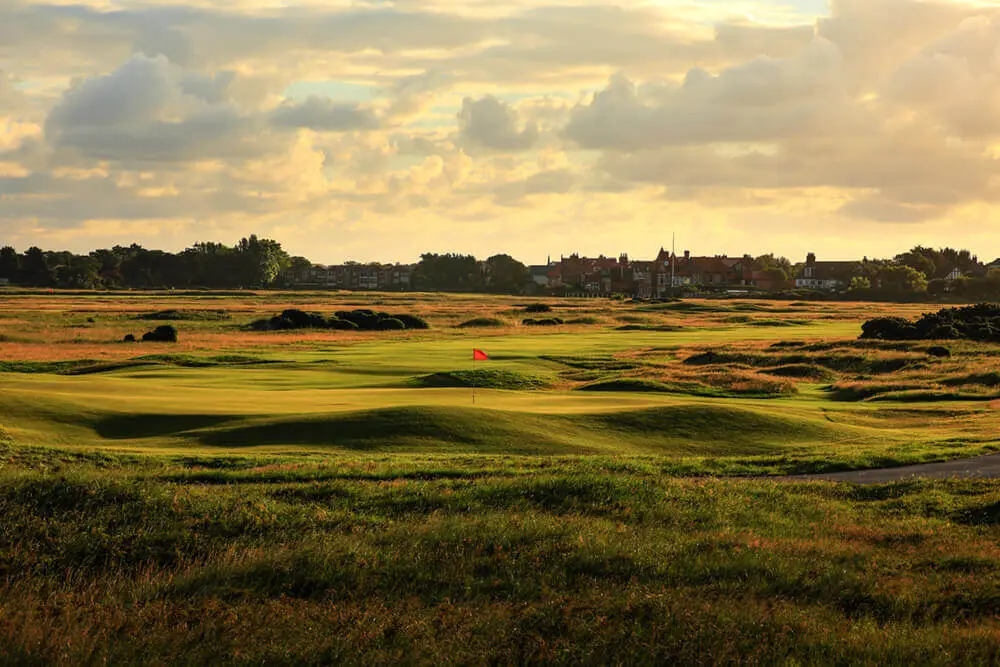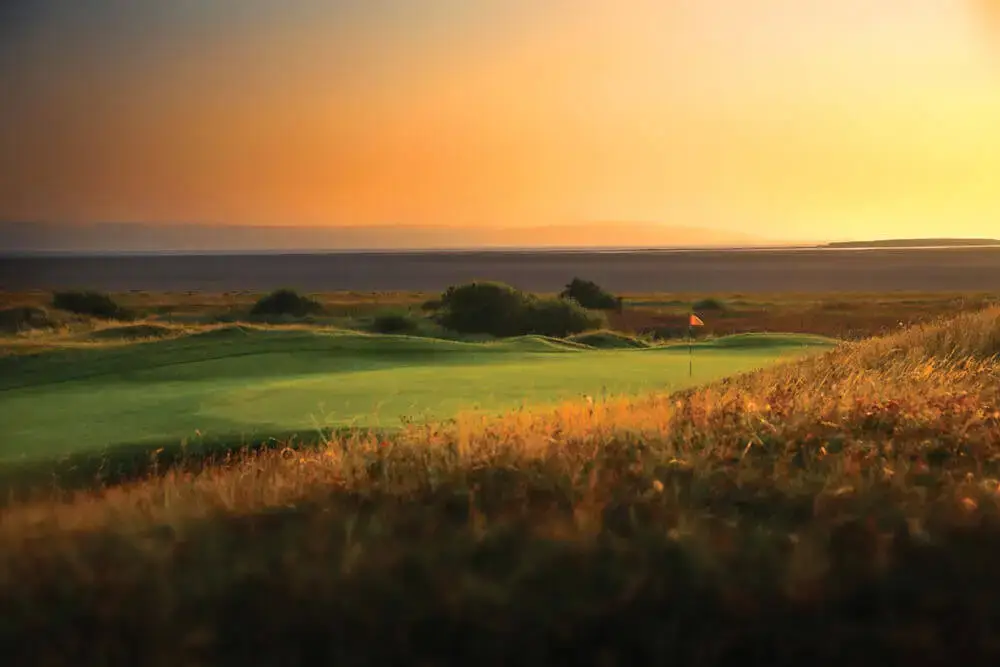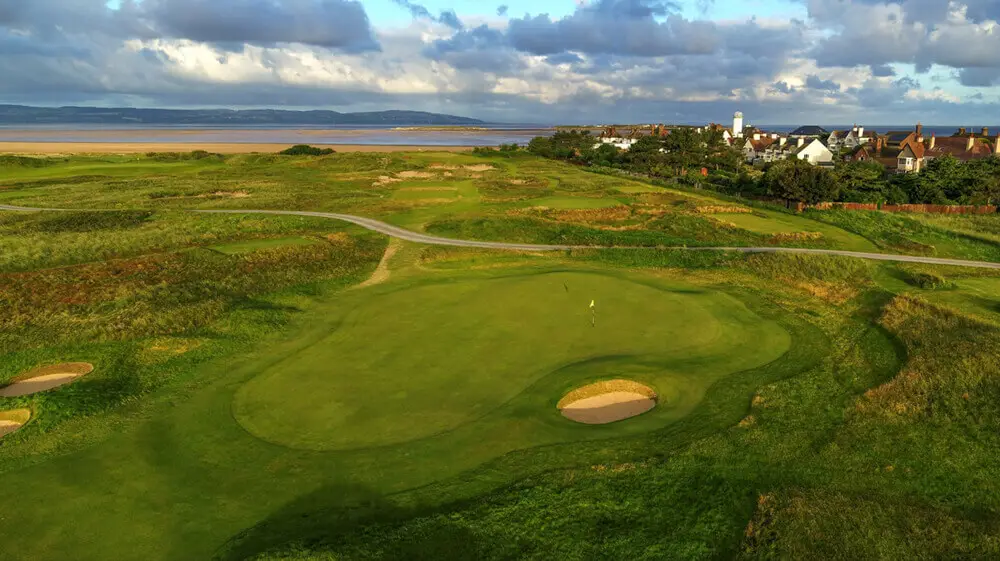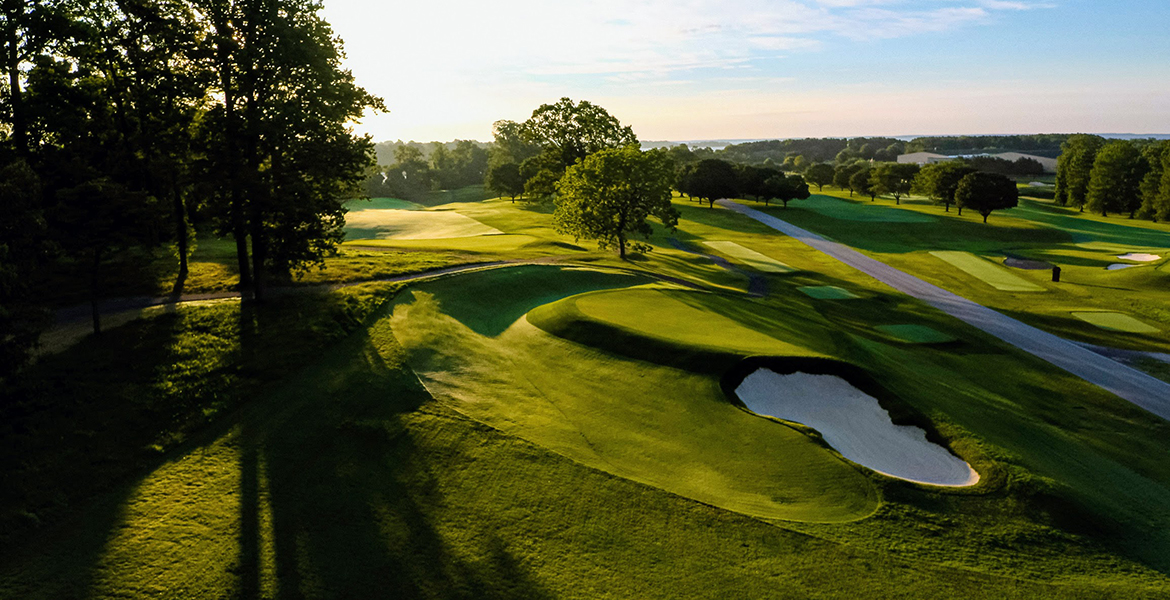Despite, or perhaps because of, its lackluster landscape, Royal Liverpool—better known as Hoylake—can still be counted on to provide a bumpy and exciting Open Championship
By the time the opening tee shot is struck at the 151st Open Championship, avid golfers who have consumed every preview they can find will have grown weary of reading how flat this year’s venue is. Royal Liverpool rarely gets openly panned, but it doesn’t stir much excitement, either. Better known as Hoylake—the well-to-do town on the northwest corner of the Wirral Peninsula where it is located—the links here is routinely described as stark and featureless. Even a little uninspiring.
Though the panorama of the Dee Estuary and the Welsh hills from the 13th green rarely fails to captivate anyone lucky enough to see it on a summer’s evening, few would call Hoylake picturesque. Rather, it is stern. And though the trend nowadays exists to build somewhat player-friendly courses with kindly slopes and greens that still receive slightly undeserving shots, Hoylake can be singularly unaccommodating: It will seldom indulge anything but a shot struck with precision and authority.

While it may not be the first choice of overseas golfers in search of formidable sand dunes, rollicking fairways, and craggy coastlines, Hoylake is undeniably worthy of the Open Championship, an event it will be hosting for the 13th time. And it boasts an outstanding roster of victors that includes J.H. Taylor, Walter Hagen, Bobby Jones, Peter Thomson, Roberto De Vicenzo, and its two most recent winners, Tiger Woods and Rory McIlroy.
What was that about succumbing only to shots struck with precision and authority?
The Liverpool Golf Club was founded in 1869, making it England’s second-oldest seaside links (five years younger than Royal North Devon). Locals commissioned Robert Chambers and Old Tom Morris’s older brother, George, to lay out nine rudimentary holes on the Liverpool Hunt Club’s racecourse in front of the imposing Royal Hotel on Stanley Road. The hotel served as the club’s first clubhouse and was owned by John Ball Sr., father of the club’s first great golfer, John Ball Jr., who would win eight British Amateur Championships and the Claret Jug, at Prestwick, in 1890.
As is true of most racetracks, the land had virtually no elevation change and was perhaps better suited to running horses than hitting golf balls. “The word ‘flat’ is used pejoratively by golfers these days,” says Joe McDonnell, an RLGC member for the last 30 years and Head of Imagery for the golf course design firm of Clayton, DeVries & Pont. “But in 1869, the land’s flatness was not considered a bad thing. The course’s obstacles were the racecourse rails, hoofprints, rabbit scrapes, and cops—low turf walls, which defined field boundaries, but also acted as sand breaks, creating natural strip bunkers. So the course was very deliberately flat.”
The racecourse and golf links shared the ground for seven years, the golfers slowly edging the horses out by quickly adding three new holes and, in 1871, establishing the full complement of 18 when new land was acquired to the south of the existing holes. That same year, the Duke of Connaught awarded the club its “Royal” status, helping it to grow in stature and prestige.
In 1885, Royal Liverpool organized an amateur tournament, which, in 1922, would finally be identified by the Royal & Ancient Golf Club of St. Andrews as the inaugural Amateur Championship. The Dundee Courier reported Allan Macfie beat Horace Hutchinson in the final by 7 and 6 and won a silver plate valued at roughly £70—seven times more than what Bob Martin received for winning the Open Championship six months later. Hoylake would also host the first England vs. Scotland match and a trans-Atlantic team event that was the forerunner to the Walker Cup, making it perhaps the spiritual home of amateur golf in Britain. And it staged the Open Championship for the first time in 1897, when club member Harold Hilton beat James Braid by a single stroke.
By 1910, the year Bernard Darwin’s revered The Golf Courses of the British Isles was published, the course had been the venue for two more Open Championships, a total of eight Amateur Championships, and a Ladies British Amateur Championship. Its flatness clearly was not a problem for the R&A. Darwin, ever the most ardent of Hoylake apologists, heaped praise on the course saying, “the golfing pilgrim is emphatically on classic ground,” and that, despite its “dull and rather mean appearance,” it was one of the most interesting and difficult courses in the world. It was, he added, “regarded with affection by all who know it well.”

Those last few words are all-important. As with the Old Course at St. Andrews, first-timers tend not to fall for Hoylake. “It reveals its character and excellence over time,” says McDonnell. “Today, it’s become standard practice for people to visit courses once and check them off a list. If they were to play Hoylake multiple times, particularly in different winds, I’m certain they’d develop a real appreciation and lasting affection for it. As Tom Doak once said, ‘Hoylake separates the true lovers of links golf from those who only sort of understand it.’”
Today’s layout is the result of Harry Colt’s effective alterations to what are the Open routing’s 1st, 10th, 13th, 14th, and 15th holes exactly 100 years ago, along with Fred Hawtree’s par-three 6th, built ahead of the 1967 Open, Donald Steel’s new greens and bunkers in the late 1990s, a few Martin Hawtree additions in 2010, and the changes Martin Ebert has made since 2015, including the construction of a brand new 17th hole, a 140-yard par three that points due west and features huge bunkers—pits, really—between tee and green.
Apart from the glorious sequence of dunesy holes from the 10th to the 14th and the new 17th, however, the course remains largely flat. So why is it considered so good? The ground is certainly firm, which elevates a course’s merit regardless of the design. But how can one see past such seemingly inert topography?
“The coastal holes do have some wonderful undulations,” says Ebert, “and the flatter sections have some very strong bunkering, excellent greens, and two holes (3 and 18) with internal OB defined by the cops. They provide great challenge whether you like internal Out of Bounds or not. So there’s plenty of interesting golf wherever you are on the course.”
In many ways, Ebert adds, relatively flat, sandy land gives the designer a good canvas to create something special. “It allows great creativity with greens and green surrounds, and ground/bunker shaping to define the test,” he says. “These design details produce a thought-provoking set of holes even for the world’s best players. And the rough, interspersed by whins and a little heather, also adds character to the flatter sections.”
The new 17th, which will no doubt be a major talking point throughout the championship, replaced the old 15th with a very short but dangerous hole featuring a horizon-line green and the Dee Estuary as a backdrop. “It should present anything from a birdie opportunity to a threat of double bogey or worse,” Ebert adds. “I imagine the leader, standing on the 71st tee, won’t be confident of victory even with a three- or four-stroke lead. The prevailing wind will push the ball toward the greenside bunker on the right, which is way below the putting surface so an extremely dangerous place to be.”

Mike Clayton spent 20 years as the consulting architect for Melbourne’s Kingston Heath, commonly regarded as the best flat course in the world. He agrees Hoylake is flatter than other great links but says that describing it as such is a “lazy summation if it’s used as a criticism.”
“Hoylake is full of interesting holes and shots,” Clayton says. “And, as Tiger showed in 2006, there are multiple ways to attack it.”
As it is on the Melbourne Sandbelt, Hoylake’s firm ground is the abiding characteristic of the course, along with clever placement of fairway bunkers. “They defend the ideal lines into the greens,” says Clayton, “so the strategy often revolves around avoiding the sand,” something Woods did so well 17 years ago, when he didn’t find a single fairway bunker.
Those with good memories will remember how brown and burnt the course looked in ’06, and should northwest England be dry from May onwards, we’ll likely see that again. The man in charge of the turf is James Bledge, who moved from Royal Cinque Ports to be Hoylake’s Links Manager in January of 2022. “Warm, arid conditions from early July would obviously allow us to dry the course out,” he says. “That would give us the traditional Open look—fast and fiery. Add some wind and we’ll have a fantastic test.”
Darwin, who famously said Hoylake was blown upon by mighty winds and bred mighty champions, would be all for that.
Thank you for supporting our journalism. If you prefer to read in print, you can also find this article in the Summer 2023 issue of LINKS Magazine. Click here for more information.






